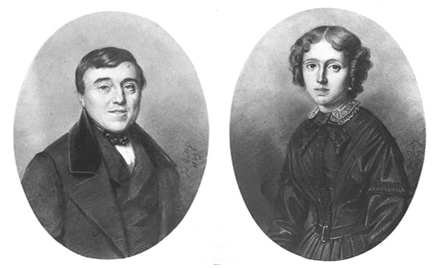
жЬАжЦ∞гБЃи®ШдЇЛ
 гГЦгГ™гГВгВєгГИгГ≥зЊОи°У駮гБМгВЂгВ§гГ¶гГЬгГГгГИгБЃгАКгВ§гВ®гГЉгГЂгБЃеє≥еОЯгАЛгВТжЦ∞жЙАиФµпЉЖе±Хз§Ї
гГЦгГ™гГВгВєгГИгГ≥зЊОи°У駮гБМгВЂгВ§гГ¶гГЬгГГгГИгБЃгАКгВ§гВ®гГЉгГЂгБЃеє≥еОЯгАЛгВТжЦ∞жЙАиФµпЉЖе±Хз§Ї
гГ©гГ≥гГАгГ†и°®з§Ї
- 2015еєі2жЬИ (2)
- 2014еєі12жЬИ (4)
- 2014еєі11жЬИ (2)
- 2014еєі5жЬИ (2)
- 2014еєі3жЬИ (1)
- 2013еєі12жЬИ (3)
- 2013еєі11жЬИ (1)
- 2013еєі10жЬИ (1)
- 2013еєі8жЬИ (2)
- 2013еєі3жЬИ (3)
- 2013еєі2жЬИ (2)
- 2013еєі1жЬИ (3)
- 2012еєі9жЬИ (3)
- 2012еєі4жЬИ (1)
- 2012еєі2жЬИ (2)
- 2011еєі10жЬИ (4)
- 2011еєі9жЬИ (5)
- 2011еєі8жЬИ (5)
- 2011еєі7жЬИ (8)
- 2011еєі4жЬИ (2)
- 2011еєі2жЬИ (1)
- 2010еєі12жЬИ (2)
- 2010еєі10жЬИ (3)
- 2010еєі9жЬИ (4)
- 2010еєі8жЬИ (2)
- 2010еєі7жЬИ (5)
- 2010еєі6жЬИ (6)
- 2009еєі11жЬИ (1)
- 2009еєі6жЬИ (30)
- 2009еєі3жЬИ (1)
- 2009еєі2жЬИ (4)
- 2009еєі1жЬИ (6)
- 2008еєі12жЬИ (6)
- 2008еєі11жЬИ (6)
- 2008еєі10жЬИ (12)
- 2008еєі9жЬИ (1)
- 2008еєі7жЬИ (1)
- 2008еєі6жЬИ (11)
- 2008еєі5жЬИ (3)
- 2008еєі3жЬИ (9)
- 2008еєі2жЬИ (2)
- 2008еєі1жЬИ (8)
- 2007еєі12жЬИ (1)
- 2007еєі11жЬИ (4)
- 2007еєі9жЬИ (9)

гГБгГ•гГЉгГЦеЕ•гВКзµµгБЃеЕЈгБЃзЩїе†ігБЂгВИгБ£гБ¶жППгБПгБУгБ®гБМгБІгБНгБЯйЃЃгВДгБЛгБ™иЙ≤ељ© гАМгВЄгВІгГ≥гГМгГігВ£гГ™гВ®гБЃеє≥йЗОгАБйїДиЙ≤гБДйЗОеОЯгАН

1884 еєі гВЂгГ≥гГігВ°гВєгБЂж≤єељ© 54.5√Ч65.4cm
дљЬеУБж¶Ви¶БгБѓгБУгБ°гВЙ
е±Хи¶ІдЉЪгБЂе±Хз§ЇгБХгВМгБ¶гБДгБЯиЙ≤жЭРгБЃзЩЇе±ХгГБгГ£гГЉгГИпЉИдЄЛзФїеГПпЉЙгБЂгВИгВЛгБ®гАБ
1870еєій†ГгБЂгБ™гБ£гБ¶гАБй£ЫиЇНзЪДгБЂиЙ≤жХ∞гБМеҐЧгБИгБ¶гБДгБНгБЊгБЧгБЯгАВ
гГБгГ•гГЉгГЦеЕ•гВКзµµгБЃеЕЈгБМйЦЛзЩЇгБХгВМгБЯгВКгАБжИЄе§Ци£љдљЬзФ®гБЃжІШгАЕгБ™йБУеЕЈгБМйЦЛзЩЇгБХгВМгБЯгВКгАБеє≥з≠ЖгБМгБІгБ¶гБПгВЛгБ™гБ©гАБ19дЄЦзіАгБЂгБ™гБ£гБ¶зФїеЃґгБЃдљњгБЖгБЯгВБгБЃйБУеЕЈгБѓйЭЮеЄЄгБЂзЩЇе±ХгБЧгБ¶гБДгБ£гБЯгБЃгБ†гБЭгБЖгБІгБЩгАВ

гБЭгБЖгБ™гВЛгБ®гАБгБЊгББгБУгБЃдљЬеУБгБЂйЩРгВЙгБЪгБІгБЩгБСгБ©
дЄЛе°ЧгВКгБЃеє≥з≠ЖгБ®гАБе°ЧгБ£гБЯгБ®гБДгБЖгВИгВКгБѓгАМзљЃгБЛгВМгБЯгАНгБ®гБДгБ£гБЯгБїгБЖгБМгБДгБДгБЛгВВгБЧгВМгБ™гБДе§ІиГЖгБ™з≠ЖиЗігАБ
еє≥еОЯгБЃйЃЃгВДгБЛгБ™гВ∞гГ™гГЉгГ≥гБ®гВ§гВ®гГ≠гГЉгАБгБЭгБЧгБ¶гВ™гГђгГ≥гВЄиЙ≤гАБ
гБУгВМгВЙгБѓ19дЄЦзіАгБІгБ™гБДгБ®жППгБСгБ™гБЛгБ£гБЯдљЬеУБгБЛгВВгБЧгВМгБ™гБДгБІгБЩгБ≠гАВ
1870еєідї£гБЂгБ™гБ£гБ¶жХ∞гБМеҐЧгБИгБЯгБ†гБСгБІгБ™гБПгАБ
гБЛгБ§гБ¶гБѓйЂШдЊ°гБ†гБ£гБЯйЭТиЙ≤гБ™гБ©гВВгВВгБ£гБ®еЃЙдЊ°гБЂгАБз∞°еНШгБЂжЙЛгБЂеЕ•гВЛгВИгБЖгБЂгБЂгБ™гБ£гБЯгБЃгБІгБЧгВЗгБЖгБ≠гАВ
гВЂгВ§гГ¶гГЬгГГгГИгБЃгБЩгБ¶гБНгБ™йЭТгБњгБМгБЛгБ£гБЯиЙ≤гБ†гБ£гБ¶гАБгБУгБЃжЩВдї£гБІгБ™гБСгВМгБ∞жППгБЛгВМгБ™гБЛгБ£гБЯгБЃгБЛгВВгБ™гББпЊН(¬іѕЙ`)гВЮ
гВВгБ£гБ®еП§гБДжЩВдї£гБЛгВЙзµµгБЃеЕЈгВДзФїжЭРгБМзЩЇе±ХгБЧгБ¶гБДгБЯгВЙ
зµµзФїгБЃжµБгВМгВВгБЊгБЯйБХгБ£гБЯгВВгБЃгБЂгБ™гБ£гБ¶гБДгБЯгБЛгВВгАВ
гБЭгБЧгБ¶гАБзµµгБЃеЕЈгВВе∞СгБ™гБПгАБжМБгБ°гВВжВ™гБПгАБе∞СгБ™гБДз®Ѓй°ЮгБЃз≠ЖгБІжППгБДгБ¶гБДгБЯ
гБЪгБ£гБ®жШФгБЃзФїеЃґгБЯгБ°гБЂгВВжДЯењГгБЧгБ°гВГгБДгБЊгБЩгБ≠гАВ
гААпЉЛгААгААпЉЛгААгААпЉЛ
гБХгБ¶гАБгБУгБЃдљЬеУБгБѓгАБз©ЇгБЃйЭҐгАБйБ†жЩѓгБЃжЬ®гАЕгБЃйЭҐгАБзЈСгБЃйЭҐгАБйїДиЙ≤гБЃйЭҐгАБгВ™гГђгГ≥гВЄгБЃйЭҐгАБгБ®
гБДгБПгБ§гБЛгБЃгВ®гГ™гВҐгБЂз∞°еНШгБЂеИЖеЙ≤гБЩгВЛгБУгБ®гБМгБІгБНгБЊгБЩгАВ
гВїгВґгГ≥гГМгБѓиЗ™зДґгВТгАМз≠ТгАБзРГгАБеЖЖйМРгАНгБ®гБЧгБ¶жНЙгБИгБ¶зµµгВТжППгБДгБ¶гБДгБЊгБЧгБЯгБМгАБ
гВЂгВ§гГ¶гГЬгГГгГИгВВйБ†ињСж≥ХгБ†гБСгБІгБ™гБПгАБгБУгБЃгВИгБЖгБЂгАМиЗ™зДґгВТеєЊдљХе≠¶зЪДгБ™ељҐгБЂжНЙгБИгВЛгАНгБЃгБМгБНгБ£гБ®е•љгБНгБ†гБ£гБЯгБЃгБІгБЧгВЗгБЖгАВ
гБЭгВМгБѓељЉгБЃдї£и°®дљЬгАМгГСгГ™гБЃйАЪгВКгАБйЫ®гАНгБЛгВЙдЄАи≤ЂгБЧгБ¶гВЂгВ§гГ¶гГЬгГГгГИгБЃдЄ≠гБЂж†єдїШгБДгБ¶гБДгВЛгВВгБЃгБ†гБ®жАЭгБДгБЊгБЩгАВ
————————————————-
гАРеЫ≥йМ≤иІ£и™ђгАС
гАМеЕЙгВТжППгБПеН∞и±°жіЊе±ХвИТзЊОи°У駮гБМиІ£гБДгБЯиђОвИТгАНе±Хи¶ІдЉЪеЫ≥йМ≤P66гВИгВК
————————————————-
дї•дЄЛгБѓгАМеЕђеЉПгБЃи™њж߿冱еСКгВµгВ§гГИгАНгВТзњїи®≥гБЧгБЯгВВгБЃгБІгБЩгАВ
пЉИйЦУйБХгБДгБМгБВгВКгБЊгБЧгБЯгВЙгБ©гБЖгБЮгБФжМЗжСШгБПгБ†гБХгБДmmпЉЙ
и©≥зі∞еЫ≥гБѓгБУгБУгБЂиЉЙгБЫгБ¶гБДгБЊгБЫгВУгБЃгБІгГ™гГ≥гВѓеЕИгВТгБФ祯и™НгБПгБ†гБХгБДгАВ
————————————————-
гВЂгВ§гГ¶гГЬгГГгГИгБѓж®ЩжЇЦзЪДгБ™F15гВµгВ§гВЇ (54.0 x 65.0 cm) гБЃгВЂгГ≥гГігВ°гВєгВТе•љгВУгБІдљњзФ®гБЧгБ¶гБКгВКгАБгБУгБЃгАМгВЄгВІгГ≥гГМгГігВ£гГ™гВ®гБЃеє≥йЗОгАБйїДиЙ≤гБДйЗОеОЯгАНгВВгБЭгБЖгБІгБВгВЛгАВ
еЕ®йГ®гБІ500дї•дЄКгБЛгВЙгБ™гВЛдљЬеУБгБЃгБЖгБ°гАБ100дљЬеУБдї•дЄКгБѓгБУгБЃгВµгВ§гВЇгБЃгВЂгГ≥гГігВ°гВєгВТйБЄгВУгБІгБДгВЛгБЃгБ†гАВ[Lewerentz 2008, pp. 274-275]
гБВгВЙгБЛгБШгВБгВ™гГХгГЫгГѓгВ§гГИгБІдЄЛе°ЧгВКгБХгВМгБЯгВЂгГ≥гГігВ°гВєгБѓзФїжЭРе±ЛгГЗгГУгГ•гБЃгВВгБЃгБІгАБгВЂгВ§гГ¶гГЬгГГгГИгБѓгБЭгБЃзФїжЭРе±ЛгВТгВИгБПеИ©зФ®гБЧгБ¶гБДгБЯгАВ[еПВзЕІпЉЪ Caillebotte WRM Dep. 828, WRM Dep. FC 727, WRM Dep. FC 689, WRM Dep. 622]
и£ПеЉµгВКгБМгБ™гБХгВМгБ¶гБДгВЛгБМгАБзіЂе§ЦзЈЪжТЃељ±гБЂгВИгБ£гБ¶гБУгБУгБІгВЂгГ≥гГігВ°гВєи£ПгБЃзФїжЭРе±ЛгБЃгВєгГЖгГ≥гВЈгГЂгБЃйКШгВТжШОгВЙгБЛгБЂгБЩгВЛгБУгБ®гБМгБІгБНгВЛгАВ(еЫ≥6)
гВЂгВ§гГ¶гГЬгГГгГИгБЃдїЦгБЃдљЬеУБгБІгВИгВКгБѓгБ£гБНгВК祯и™НгБЩгВЛгБУгБ®гБМгБІгБНгВЛгВИгБЖгБЂгАБгБУгБЃдљЬеУБгБІгВВжЬ®зВ≠гБ®гГЦгГ©гВЈгГЪгВ§гГ≥гГИгБЃ2жЃµйЪОгБЃеЬ∞е°ЧгВКгБМгБХгВМгБЯи®ЉжЛ†гБМгБњгБ§гБЛгБ£гБЯгАВ
[еПВзЕІпЉЪ Caillebotte WRM Dep. 828, WRM Dep. FC 706, WRM Dep. 447, WRM Dep. 622] (еЫ≥12)
гБЭгБЃеЊМгАБгБЭгБЃдљЬеУБгБѓгВ¶гВІгГГгГИ-гВ§гГ≥-гВ¶гВІгГГгГИгБ†гБСгБІгБ™гБПгВ¶гВІгГГгГИ-гВ™гГ≥-гГЙгГ©гВ§гБЃжКАж≥ХгБІгАБдЄїгБЂзЯ≠гБДгВєгГИгГ≠гГЉгВѓгБ®гБѓгБЯгБДгБЯгВИгБЖгБ™ењЂжіїгБ™з≠ЖиЗігБІжППгБЛгВМгБЯгАВ
дљЬеУБгБЃи°®йЭҐгБѓ2,3гБЃеЈ•з®ЛгБІзє∞гВКињФгБЧе°ЧгВЙгВМгАБеЊРгАЕгБЂи¶ЖгВПгВМгБ¶гБДгБНгАБдљЬеУБеЙНйЭҐгБѓгБЊгБЩгБЊгБЩеОЪе°ЧгВКгБЂгБ™гБ£гБЯгАВ
гГАгГЉгВѓгВ∞гГ™гГЉгГ≥гБІжППгБЛгВМгБЯгВµгВ§гГ≥гБ®еИґдљЬеєігБѓжЬАеЊМгБЃгВЂгГ©гГЉгГПгВ§гГ©гВ§гГИгБ®еРМгБШиЙ≤гБІеРМжЩВгБЂжППгБЛгВМгБЯгВИгБЖгБЂгБњгБИгВЛгАВ(еЫ≥7)
гБУгБЃдљЬеУБгБМжИЄе§ЦгБІжППгБЛгВМгБЯгБ®гБДгБЖйЗНи¶БгБ™и®ЉжЛ†гБМгАБдљЬеУБдЄЛзЂѓгБЂзҐЇи™НгБІгБНгВЛгАВжЃЛењµгБ™гБУгБ®гБЂдњЃж≠£гБХгВМгБ¶гБДгВЛгБМгАБељУжЩВгВИгБПжИЄе§ЦгБІдљњзФ®гБХгВМгВЛз®Ѓй°ЮгБЃгВ§гГЉгВЉгГЂгБІеЫЇеЃЪгБХгВМгБ¶гБДгБЯгАБзµµгБЃеЕЈгБМе°ЧгВЙгВМгБ¶гБДгБ™гБДе∞ПгБХгБ™йГ®еИЖгБІгБВгВЛгАВ
[vgl. Caillebotte WRM Dep. 622, WRM Dep. FC 828, WRM Dep. FC 727, WRM Dep. FC 689](еЫ≥10)
и©≥зі∞еЫ≥2пЉЪи£ПжЙУгБ°гБХгВМгБ¶гБДгВЛдљЬеУБи£ПйЭҐ
и©≥зі∞еЫ≥3пЉЪжЦЬеЕЙгВТгБВгБ¶гБЯжІШе≠Р
и©≥зі∞еЫ≥4пЉЪйАПйБОеЕЙзЈЪеЖЩзЬЯ
и©≥зі∞еЫ≥5пЉЪзіЂе§ЦзЈЪеЖЩзЬЯ
и©≥зі∞еЫ≥6пЉЪи£ПйЭҐзіЂе§ЦзЈЪеЖЩзЬЯгАВзФїжЭРе±ЛгГЗгГ•гГУгГ•гБЃгВєгГЖгГ≥гВЈгГЂгБМгБЖгБ£гБЩгВЙи™Ни≠ШгБІгБНгВЛгАВ
и©≥зі∞еЫ≥7пЉЪгВµгВ§гГ≥и©≥зі∞
и©≥зі∞еЫ≥8пЉЪзФЯгБНзФЯгБНгБ®гБЧгБЯзµµз≠ЖгАВдЄЛгБЃзЩљеЬ∞гБМйБ©ељУгБЂжЃЛгБ£гБЯгБЊгБЊгБ†гАВ
и©≥зі∞еЫ≥9пЉЪгВ¶гВІгГГгГИгГїгВ§гГ≥гГїгВ¶гВІгГГгГИгВДгВ¶гВІгГГгГИгГїгВ™гГ≥гГїгГЙгГ©гВ§гБІжППгБЛгВМгБЯиК±зХСйГ®еИЖи©≥зі∞гАВ
и©≥зі∞еЫ≥10пЉЪдљЬеУБдЄЛйГ®и©≥зі∞гАВеЕ•е∞ДеЕЙзЈЪгБ®й°ХеЊЃйП°гБІгБњгБЯгГ™гВњгГГгГБгБХгВМгБЯзЃЗжЙАгАВпЉИ1зЫЃзЫЫ=1mmпЉЙгБЭгВМгБѓе±Ле§ЦзФ®гВ§гГЉгВЉгГЂгБІеЫЇеЃЪгБХгВМгБ¶гБДгБЯгБЯгВБгБЂгБІгБНгБЯгБЃгБІгБВгВНгБЖгАВ
и©≥зі∞еЫ≥11пЉЪй°ХеЊЃйП°гБІи¶ЛгВЛгАБйїДиЙ≤гБЛгВЙ赧иМґиЙ≤гБЃгВПгБЪгБЛгБ™жЈЈеРИзЙ©гБМгБВгВЛгВ™гГХгГЫгГѓгВ§гГИгБЃдЄЛеЬ∞гАВпЉИ1зЫЃзЫЫ=1mmпЉЙ
и©≥зі∞еЫ≥12пЉЪй°ХеЊЃйП°гБІи¶ЛгВЛйЭТзБ∞иЙ≤гБЃдЄЛе°ЧгВКгБ®дЇЛеЙНгБЂжППгБДгБЯжЬ®зВ≠гБЃгВєгВ±гГГгГБгБ®жАЭгВПгВМгВЛгВВгБЃгБЃиЈ°гАВпЉИ1зЫЃзЫЫ=1mmпЉЙ
Caillebotte had a particular predilection for pictures in the standard Figure 15 (54.0 x 65.0 cm) format, and this painting Gennevilliers Plain, Yellow Fields, is one such. He chose this format for more than a hundred pictures out of a total output comprising more than 500 works [Lewerentz 2008, pp. 274-275]. The canvas, pre-primed in off-white, came from the art-supply dealer Dubus, whom Caillebotte frequently patronized [cf. Caillebotte WRM Dep. 828, WRM Dep. FC 727, WRM Dep. FC 689, WRM Dep. 622]. In spite of the canvas’s being lined, it was possible here to use UV fluorescence to reveal the dealer’s stencilled inscription on the canvas verso (fig. 6). As has been possible to establish far more clearly in Caillebotte’s other pictures, this one too shows evidence of a two-stage underdrawing in charcoal and in brush-and-paint. [cf. Caillebotte WRM Dep. 828, WRM Dep. FC 706, WRM Dep. 447, WRM Dep. 622] (fig. 12). The actual painting was then executed with lively brushwork predominantly in short strokes and dabs, wet-in-wet, but also wet-on-dry. The surface of the picture was gradually covered in repeated applications of paint spread over two to three sessions, during which process the foreground became increasingly impasto (figs. 3, 4). The autograph signature and date in dark-green paint seem to have been applied at the same time as the final colour highlights and in an identical colour (fig. 7). An important pointer to the picture’s having been painted in the open air is to be found on its bottom edge, where a (now unfortunately retouched) unpainted patch points to the painting’s having been fastened to a field-easel of the sort then usual for plein air painting [vgl. Caillebotte WRM Dep. 622, WRM Dep. FC 828, WRM Dep. FC 727, WRM Dep. FC 689] (fig. 10).
Fig. 2пЉЪVerso, lined
Fig. 3пЉЪRaking light
Fig. 4пЉЪTransmitted light
Fig. 5пЉЪUV fluorescence
Fig. 6пЉЪUV fluorescence of verso with detail of the sketchily discernible dealerвАЩs stencil вАЬDUBUSвАЭ
Fig. 7пЉЪDetail, signature
Fig. 8пЉЪDetail, brisk painting method with places where the white ground has been left free
Fig. 9пЉЪDetail, flower field, with wet-in-wet and wet-on-dry paint applications
Fig. 10пЉЪDetail of the bottom edge of the picture, retouched unpainted patch in incident light and beneath the microscopic photograph (M = 1 mm), which presumably derives from the pictureвАЩs having been fastened to a field-easel
Fig. 11пЉЪOff-white ground with slight admixture of yellow to red-ochre pigment, microscopic photograph (M = 1 mm)
Fig. 12пЉЪBlue-grey brush underdrawing and remains of what appears to be a previous charcoal sketch, microscopic photograph (M = 1 mm)
Comment
No comments yet.


